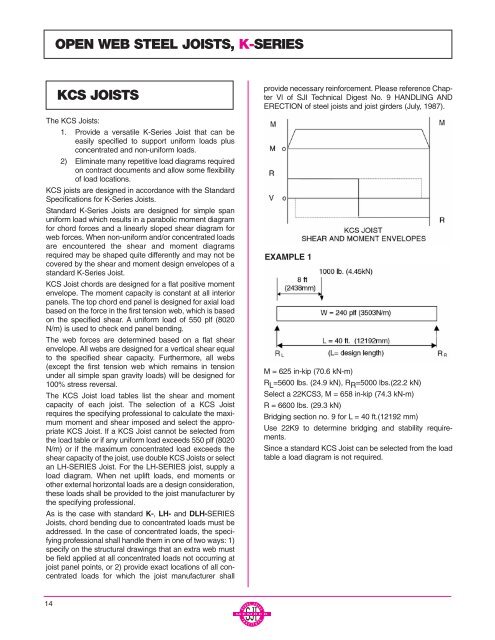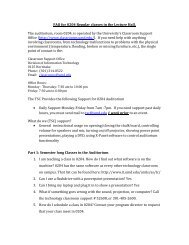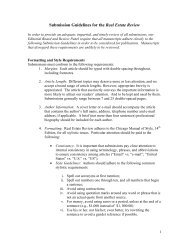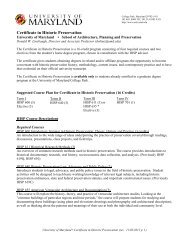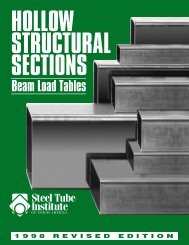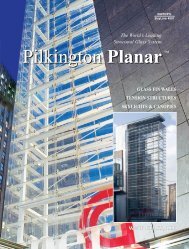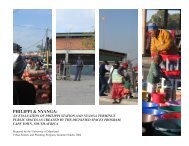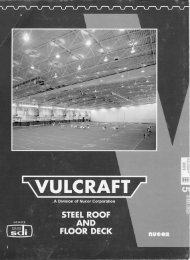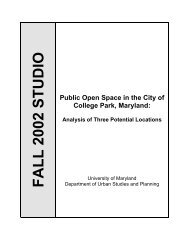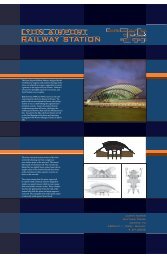Vulcraft_Joist_Catal..
Vulcraft_Joist_Catal..
Vulcraft_Joist_Catal..
- No tags were found...
Create successful ePaper yourself
Turn your PDF publications into a flip-book with our unique Google optimized e-Paper software.
OPEN WEB STEEL JOISTS, K-SERIES<br />
KCS JOISTS<br />
The KCS <strong>Joist</strong>s:<br />
1. Provide a versatile K-Series <strong>Joist</strong> that can be<br />
easily specified to support uniform loads plus<br />
concentrated and non-uniform loads.<br />
2) Eliminate many repetitive load diagrams required<br />
on contract documents and allow some flexibility<br />
of load locations.<br />
KCS joists are designed in accordance with the Standard<br />
Specifications for K-Series <strong>Joist</strong>s.<br />
Standard K-Series <strong>Joist</strong>s are designed for simple span<br />
uniform load which results in a parabolic moment diagram<br />
for chord forces and a linearly sloped shear diagram for<br />
web forces. When non-uniform and/or concentrated loads<br />
are encountered the shear and moment diagrams<br />
required may be shaped quite differently and may not be<br />
covered by the shear and moment design envelopes of a<br />
standard K-Series <strong>Joist</strong>.<br />
KCS <strong>Joist</strong> chords are designed for a flat positive moment<br />
envelope. The moment capacity is constant at all interior<br />
panels. The top chord end panel is designed for axial load<br />
based on the force in the first tension web, which is based<br />
on the specified shear. A uniform load of 550 plf (8020<br />
N/m) is used to check end panel bending.<br />
The web forces are determined based on a flat shear<br />
envelope. All webs are designed for a vertical shear equal<br />
to the specified shear capacity. Furthermore, all webs<br />
(except the first tension web which remains in tension<br />
under all simple span gravity loads) will be designed for<br />
100% stress reversal.<br />
The KCS <strong>Joist</strong> load tables list the shear and moment<br />
capacity of each joist. The selection of a KCS <strong>Joist</strong><br />
requires the specifying professional to calculate the maximum<br />
moment and shear imposed and select the appropriate<br />
KCS <strong>Joist</strong>. If a KCS <strong>Joist</strong> cannot be selected from<br />
the load table or if any uniform load exceeds 550 plf (8020<br />
N/m) or if the maximum concentrated load exceeds the<br />
shear capacity of the joist, use double KCS <strong>Joist</strong>s or select<br />
an LH-SERIES <strong>Joist</strong>. For the LH-SERIES joist, supply a<br />
load diagram. When net uplift loads, end moments or<br />
other external horizontal loads are a design consideration,<br />
these loads shall be provided to the joist manufacturer by<br />
the specifying professional.<br />
As is the case with standard K-, LH- and DLH-SERIES<br />
<strong>Joist</strong>s, chord bending due to concentrated loads must be<br />
addressed. In the case of concentrated loads, the specifying<br />
professional shall handle them in one of two ways: 1)<br />
specify on the structural drawings that an extra web must<br />
be field applied at all concentrated loads not occurring at<br />
joist panel points, or 2) provide exact locations of all concentrated<br />
loads for which the joist manufacturer shall<br />
provide necessary reinforcement. Please reference Chapter<br />
Vl of SJI Technical Digest No. 9 HANDLING AND<br />
ERECTION of steel joists and joist girders (July, 1987).<br />
EXAMPLE 1<br />
M = 625 in-kip (70.6 kN-m)<br />
R L =5600 lbs. (24.9 kN), R R =5000 lbs.(22.2 kN)<br />
Select a 22KCS3, M = 658 in-kip (74.3 kN-m)<br />
R = 6600 lbs. (29.3 kN)<br />
Bridging section no. 9 for L = 40 ft.(12192 mm)<br />
Use 22K9 to determine bridging and stability requirements.<br />
Since a standard KCS <strong>Joist</strong> can be selected from the load<br />
table a load diagram is not required.<br />
14


